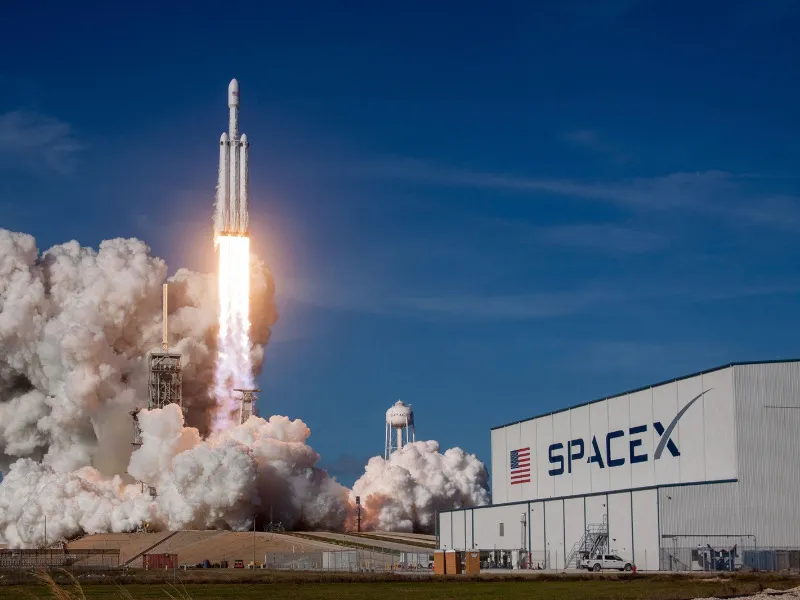- SpaceX is currently negotiating with U.S. and Australian officials about landing and recovering one of its Starship rockets off Australia’s coast.
- The proposed operation is part of a broader effort by the U.S. to strengthen security ties with Australia, particularly amid rising tensions with China.
OUR TAKE
SpaceX wants to land its giant Starship rocket off Australia’s coast. It’s like Elon Musk’s taking his space dreams Down Under. But why Australia? Could be part of the U.S.’s plan to beef up security in the region, with AUKUS and all. And let’s face it, Australia’s got plenty of remote coastline to play with. But it’s not just about the location – SpaceX needs to get the green light from the U.S. to send over its fancy space tech. Looks like the Biden admin’s trying to make it happen, but we’ll see how it pans out. It’s a bold move, that’s for sure.
–Miurio huang, BTW reporter
What happened
SpaceX is negotiating with U.S. and Australian authorities to land and recover one of its Starship rockets off Australia’s coast, marking a potential milestone for the company and a strategic shift in its operations. The ambitious plan could serve as a stepping stone toward a more substantial presence in the region, coinciding with heightened security collaboration between the United States and Australia.
The initiative comes on the heels of SpaceX’s successful controlled splashdown of a Starship rocket in June. This event, which occurred in the Indian Ocean, marked a significant advancement in SpaceX’s efforts to refine its Starship program. The company has been actively working to expand its testing and recovery operations to enhance the development of its reusable rockets. Successful landings and subsequent recoveries are crucial for demonstrating the viability of Starship as both a satellite launcher and a spacecraft capable of landing astronauts on the Moon and, eventually, Mars.
SpaceX’s current strategy involves launching a Starship rocket from its Texas facility, landing it in the sea off Australia’s coast, and then recovering it on Australian soil. This process would involve intricate coordination between various stakeholders, including U.S. and Australian space and defense agencies. Securing permission for such operations would necessitate adjustments to existing U.S. export controls on advanced space technologies intended for Australia. Discussions on this front are ongoing, with officials from both countries working to navigate regulatory and logistical challenges.
The Biden administration has already been involved in easing export restrictions under the AUKUS security alliance—a trilateral partnership involving the United States, Australia, and Britain, aimed at bolstering regional security and countering China’s growing influence. This alliance could play a pivotal role in facilitating SpaceX’s ambitious plans by streamlining the regulatory process and enhancing cooperation between the involved nations.
The proposed plan involves towing the recovered Starship to a port on Australia’s western or northern coasts, though specific details and locations for the recovery operation are still under discussion. The logistical challenges of such an operation include ensuring safe and efficient transportation of the recovered rocket from the ocean or barge to the mainland. This endeavor underscores SpaceX’s commitment to advancing its technology and operational capabilities while strengthening its global footprint.
Also read: FAA greenlights SpaceX’s Falcon 9 for launch
Also read: SpaceX’s historic Polaris Dawn mission delayed
Why it’s important
SpaceX’s plans to land and recover a Starship rocket off Australia’s coast represent a significant development in the company’s ongoing quest to refine and operationalise its spacecraft. The ability to successfully land and recover reusable rockets is central to SpaceX’s vision of reducing the cost of access to space and enabling more frequent and cost-effective space missions. This step aligns with the company’s broader goals of supporting lunar exploration and eventually enabling human missions to Mars.
For Australia, hosting SpaceX’s Starship recovery operations could symbolise a strengthening of its space and defense capabilities. The U.S.-Australia security partnership, particularly under the AUKUS framework, emphasises mutual interests in countering regional threats and enhancing technological cooperation. SpaceX’s activities in Australia would not only highlight the nation’s growing role in space exploration but also serve as a testament to its strategic alignment with key global players.
The successful execution of this plan could set a precedent for future space operations and collaborations. It would showcase the feasibility of international partnerships in managing complex space missions and underscore the importance of global cooperation in advancing space technology. The operation could also pave the way for further innovations and investments in the space industry, contributing to the broader goals of space exploration and technological advancement.
SpaceX’s initiative to land and recover a Starship rocket off Australia’s coast represents a significant advancement in both space exploration and international collaboration. As discussions continue and plans are finalised, the successful execution of this operation could mark a new chapter in SpaceX’s journey, enhancing its capabilities and expanding its global presence while reinforcing the strategic partnership between the United States and Australia.

